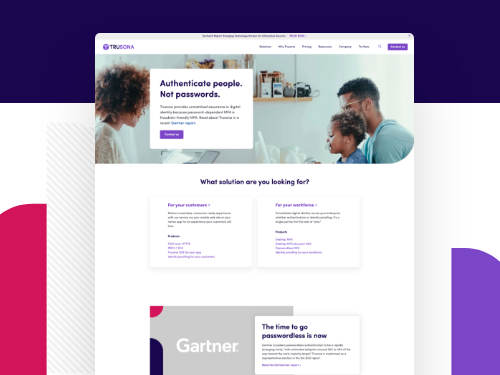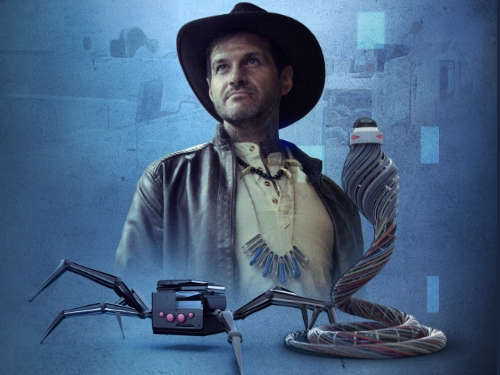Within the previous blogs in our marketing acronym series, we took a look at the top acronyms used in the sales and advertising realm, as well as the website design and development side of marketing. In today’s acronym review, we explore the top 45 acronyms most commonly used in and around the office (whether you work from the office or WFH) and those used in the contracting and legal departments. While we’re sure you know what PTO is, you may not know what TOFU means, and no, we’re not talking about the soy product.

- SLA (Service Level Agreement)
A contract (sometimes it’s internal, and sometimes you have a set expectation that you’ve discussed with your customer) outlining the level of service they can expect.
- NPS (Net Promoter Score)
A measure of customer satisfaction and loyalty, based on the likelihood of them recommending your product or service.
- MRR (Monthly Recurring Revenue)
The amount of predictable recurring revenue generated each month from your subscription-based products or services.
- ARR (Annual Recurring Revenue)
The money you can count on every year from your loyal customers who just can’t get enough of your product or service.
- DTC (Direct-to-Consumer)
A business model where you sell your products directly to consumers, no middleman needed.
- DR (Direct Response)
A marketing approach that aims to get a quick response from your target audience. Think of it like a call-to-action, but with more urgency.
- QA (Quality Assurance)
The process of making sure your product or service is up to snuff and meets all necessary quality standards.
- TOFU (Top of the Funnel)
The beginning of the customer journey, where a potential customer is first introduced to your product or service.
- MOFU (Middle of the Funnel)
The stage of the customer journey where a potential customer is considering your product or service.
- BOFU (Bottom of the Funnel)
The final stretch of the customer journey, where a potential customer is close to making a purchase.
- UGC (User-Generated Content)
Content created by your customers, like reviews, comments, or social media posts. People trust other people, so this type of content can be powerful.
- USP (Unique Selling Proposition)
What sets your product or service apart from the competition. This is what makes you stand out in a crowded market.
- SaaS (Software as a Service)
No more bulky software installations on your computer, now it’s all about subscribing to the latest and greatest software via the internet.
- WOM (Word of Mouth)
When your friends give you the lowdown on the latest product or service, that’s WOM.
- FB (Facebook)
It’s where everyone goes to check in on their mom’s friends, and share memes with their high school BFFs.
- IG (Instagram)
The ultimate platform for posting those #Foodie pics, #OOTDs, and #TravelGoals.
- MVP (Minimum Viable Product)
It’s like the beta version of a product, with just enough features to get people hyped.
- DAU (Daily Active User)
A user who’s all about that daily engagement life.
- MAU (Monthly Active User)
Basically, a user who pops in once a month for some good times.
- TAM (Total Addressable Market)
The whole shebang of people who could potentially be into your product or service.
- SOM (Serviceable Obtainable Market)
The portion of the total market that a company can realistically reach and sell its products or services to.
- SMB (Small and Medium-Sized Businesses)
These are the cool, up-and-coming businesses that are killing it with fewer than 500 employees.
- SME (Small and Medium-Sized Enterprises)
A term used in Europe and some other regions to describe businesses with fewer than 250 employees. It’s like the European version of SMBs.
- RFP (Request for Proposal)
Basically, it’s like asking “Yo, who wants to do some work for me and my biz?” to potential suppliers or contractors.
- TOS (Terms of Service)
The legal agreement between you and the service provider that outlines what’s expected from both parties.
- PM (Project Manager)
Your one-stop-shop for getting things done and keeping the team on track.
- EOW (End of Week)
The end of a workweek and the start of the weekend.
- EOM (End of Month)
The end of a month and the start of a new one.
- P&L (Profit and Loss)
A financial statement that keeps tabs on the money coming in and going out of your business.
- AMA (Ask Me Anything)
A financial statement that keeps tabs on the money coming in and going out of your business.
- TK (To Come)
A placeholder used in text when a piece of information is not yet available. It’s like the “Coming Soon” sign on a movie poster.
- H/t (Hat Tip)
A way to show appreciation for someone or something that inspired or helped you.
- WFH (Work From Home)
The freedom to work from the comfort of your own home.
- FAQ (Frequently Asked Questions)
A list of questions and answers to help you quickly find what you’re looking for.
- DM (Direct Message)
A private chat between you and another person on social media.
- RT (Retweet)
When you share someone else’s tweet with your followers.
- PO (Purchase Order)
A document sent by a buyer to a seller, indicating the type, quantity, and agreed price for goods or services.
- TL;DR (Too Long; Didn’t Read)
A summarization of a long piece of text.
- CMO (Chief Marketing Officer)
The person in charge of a company’s marketing strategy.
- TBD (To Be Determined)
A placeholder for something that hasn’t been decided yet.
- OOO (Out of Office)
A message indicating that you’re not available to respond to emails or calls.
- PTO (Paid Time Off)
Time off work, paid – because you deserve a break!
To learn more about any of the services attributed to these acronyms, contact us today.


